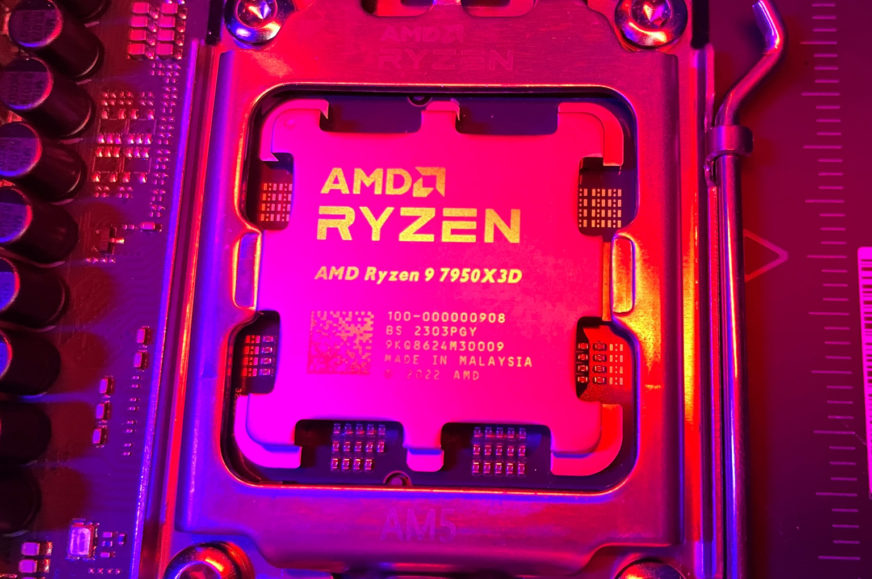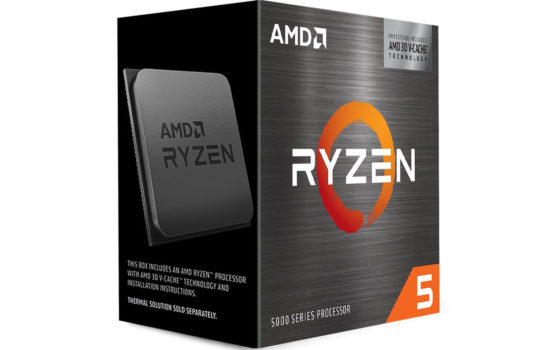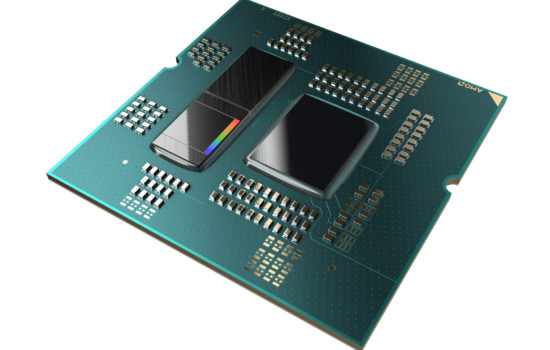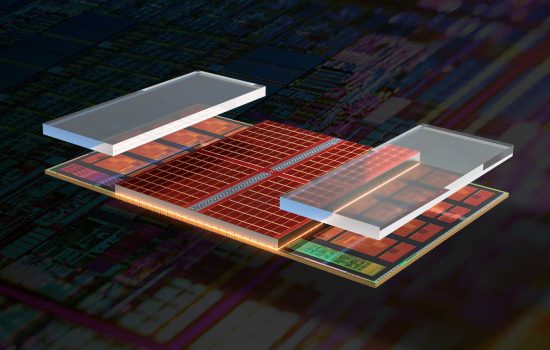VSoC voltages higher than 1.3V can destroy Ryzen 7000s even if you don't overclock. Beware of memory OC and Expo
Last week, cases of destroyed V-Cache using Ryzen 7000 “X3D” CPUs and even a burned socket on the board (the dead CPU probably started drawing excessive current from the VRM through the pins). At first it wasn’t clear if it wasn’t a result of manual overvolting, but AMD announced that they have found the cause of the problem and are releasing board BIOS updates to protect the CPUs from damage, so definitely update.
There is probably more than one Ryzen 7000X3D overclocking issue currently, so it’s not always clear what was behind the cases of destroyed CPUs. We have already written that some boards allowed setting increased voltage, which is not supposed to be enabled for X3D processors (damage occurred at voltages as low as over 1.35 V, in this case the responsibility lies mainly with the user, although some blame can be put on the BIOSes of the boards and possibly AGESA for not blocking the voltage increases). Board manufacturers have already started releasing BIOS fixes that will remove the ability to make these dangerous voltage adjustments.
But AMD announced last week that it had discovered a flaw that leads to damaged or destroyed processors, so apparently there are also cases of damage where the users did not set the dangerous voltage themselves. On Reddit, there was a case of a user whose Ryzen 7 7800X3D in an Asus motherboard died while not being overclocked besides using DDR5 memory with the Expo profile, damaging the motherboard too.
AMD has gradually released two statements on this, the first one talking about a problem with too high voltage manually set during overclocking, but not yet confirming that there could be a problem without such active user input. This statement said that changes had been made to the AGESA code, based on which fixes to motherboard BIOSes should be released by motherboard manufacturers. The BIOSes (or more accurately, UEFI) of the motherboards should be correctly capping voltage for Ryzen 7000 processors after these updates.
Warning: the SoC voltage must not go above 1.3 V
Apparently this means limiting the voltage that can be pumped into the CPU cores of Ryzen 7000X3D, but it turns out that there is not only a problem with the voltage for the CPU cores (Vcore), but also with the voltage for the “uncore” and IO chiplet, which is labelled VSoC. In fact, AMD states that the new BIOSes will also impose a limit on the SoC voltage, namely 1.3V. So it’s obvious that you should never go higher with this voltage when manually overclocking (and it’s apparently not safe on Ryzen 7000s without 3D V-Cache eiher – you’d better double-check your settings if you’re overclocking).
We are aware of a limited number of reports online claiming that excess voltage while overclocking may have damaged the motherboard socket and pin pads. We are actively investigating the situation and are working with our ODM partners to ensure voltages applied to Ryzen 7000X3D CPUs via motherboard BIOS settings are within product specifications. Anyone whose CPU may have been impacted by this issue should contact AMD customer support.
Later, AMD released a second statement, according to which the actual root cause of the destruction of the processors was found, and again it is mentioned that the solution is AGESA fixes, which will limit the voltages allowed on some power delivery rails of the processor, including the mentioned 1.3V limit for VSoC. If you have experienced the problem, you are supposed to contact AMD support, so individual cases could likely be covered by an RMA process.
We have root caused the issue and have already distributed a new AGESA that puts measures in place on certain power rails on AM5 motherboards to prevent the CPU from operating beyond its specification limits, including a cap on SOC voltage at 1.3V. None of these changes affect the ability of our Ryzen 7000 Series processors to overclock memory using EXPO or XMP kits or boost performance using PBO technology.
We expect all of our ODM partners to release new BIOS for their AM5 boards over the next few days. We recommend all users to check their motherboard manufacturers website and update their BIOS to ensure their system has the most up to date software for their processor.
Anyone whose CPU may have been impacted by this issue should contact AMD customer support. Our customer service team is aware of the situation and prioritizing these cases.
Tom’s Hardware reports that some of its sources, apparently from the board manufacturers, claim that the failure mechanism is SoC voltages above 1.3V causing the sensors that monitor voltage and other characteristics in the chip to fail, which leads to the system management unit to demand higher and higher voltages from the board due to faulty telemetry, and this process eventually destroys the CPU and can potentially lead to board damage too. However, this explanation has not been officially confirmed yet.
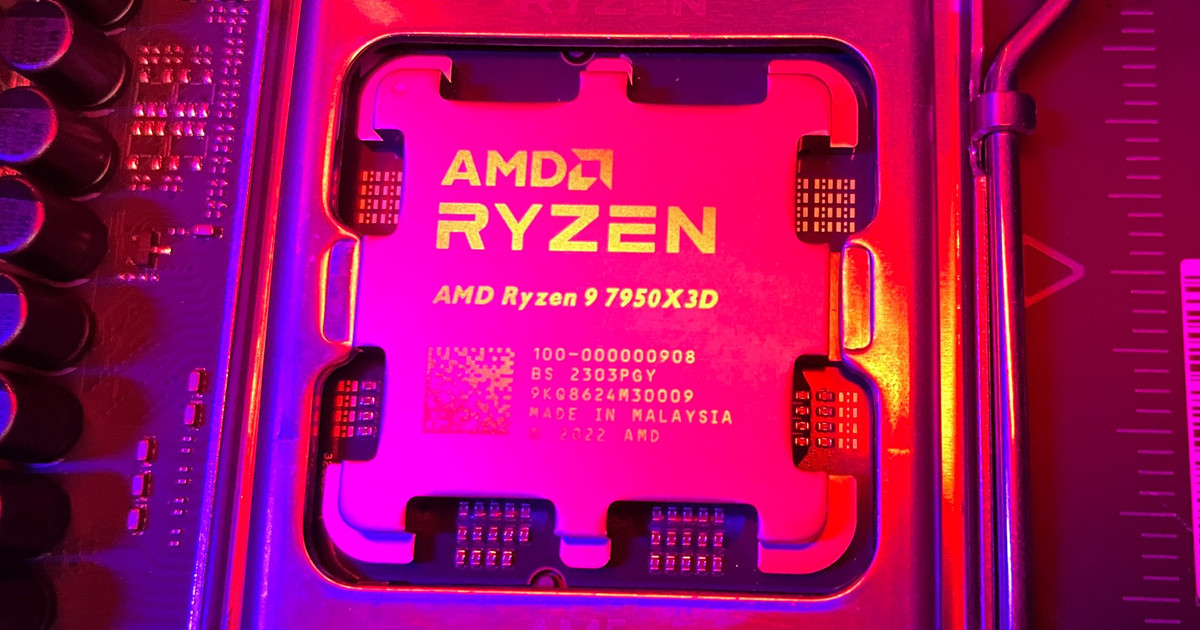
It seems from this that the problem has really occurred not only after manual intervention by users, but also in some cases where the processor or perhaps the firmware of the board itself could have caused the dangerous voltage on their own, which makes the problem more serious. It seems that that VSoC voltage could have ended up above 1.3 V also because of the automatic voltage control, not only when the user set it themselves. Unfortunately, this may have happened with some memory kits that use Expo profiles, although this trigger is probably not 100% confirmed yet. It seems that too high voltage in these cases is not explicitly set directly by the profile itself. What happens instead is that the BIOS of the board decides how much voltage to pump into the SoC rail to guarantee the functionality of the memory at the appropriate clock speeds, in some apparently going too far. So it is possible that the responsibility for exceeding these safe limits could be in BIOS code that comes from the board manufacturers, not form AMD’s AGESA, though that doesn’t change the end result for affected users.
Anyway, after the BIOSes are fixed, this should be prevented and activating the Expo profile (or XMP too?) should no longer lead to exceeding safe voltages. Note that AMD states that this shouldn’t lead to worse memory overclocking capabilities or not being able to run at clock speeds as high as before.
What’s the takeaway from this then? Definitely update the BIOS on your motherboard if you are running a Ryzen 7000 and especially if you use one of the new Ryzen 7000 “X3Ds” with V-Cache. Better keep an eye on what updates are coming out for your board for a while now, in case the fixes come spread over multiple updates. Until you have a fix flashed in your board (and ideally for some time after that just to be safe), you should probably disable the Expo profiles for the memory, and check if the VSoC voltage is below 1.3V when manually set (you should ideally go lower, as the real voltage can sometimes probably come out a bit higher than the board measures, and it’s good to have headroom for fluctuations).
After updating the BIOSes of the boards, these problems and destroyed processors should not occur anymore. It seems that new BIOSes for AM5 boards that are currently coming out should also include support for 24GB and 48GB DDR5 modules, which didn’t work at first, and also reduce the long boot times, at least for some boards. So updating should generally be worthwhile now, we certainly don’t recommend putting it off.
Sources: AnandTech (1, 2), Tom’s Hardware (1, 2), igor’sLAB
English translation and edit by Jozef Dudáš
⠀





